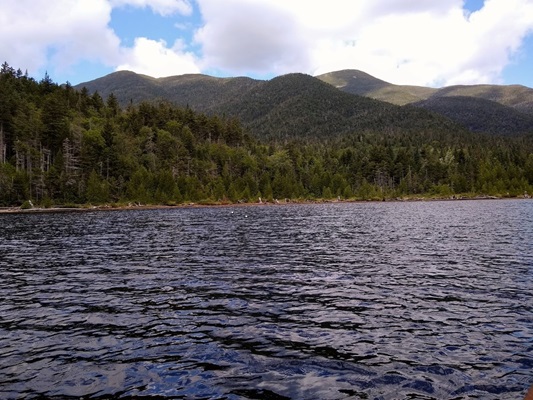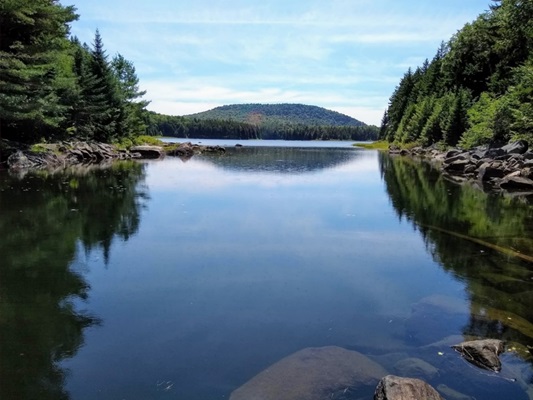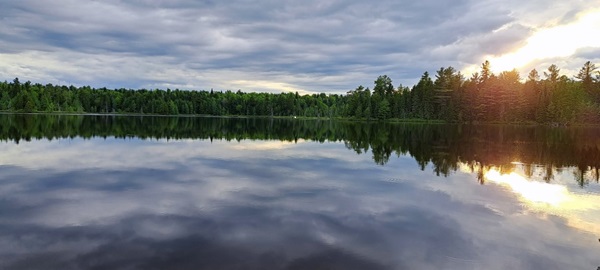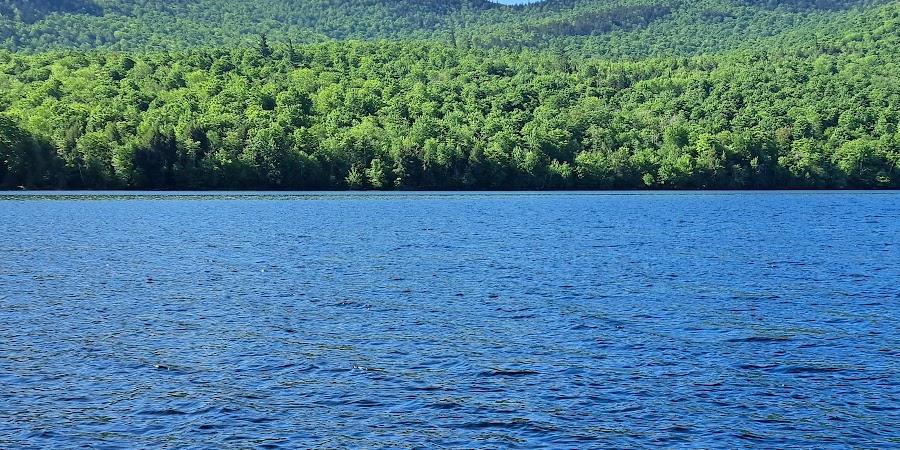July is Lakes Appreciation Month. This national initiative to appreciate and protect lakes was started in 1998 by the North American Lake Management Society (NALMS) and is supported by the US EPA.

Lake Colden, located in the High Peaks Wilderness Area. Lake Colden is a success story in the recovery from acid deposition. After native brook trout were extirpated from the lake for over 40 years by degraded water quality, these important fish have once again established a self-sustaining population.
In the Adirondack Park, there are A LOT of lakes to appreciate. In the Ausable watershed alone, there are 49 named bodies of water. The total number of lakes within the blue line is a subject for some debate, but by most counts the Adirondacks boasts over 3,000 lakes and ponds. With so many unique water bodies in the region shaping our landscape and culture, it's worth taking a deeper look at lakes and why they are so important.
Support our water quality work for clean water. Give with confidence today!
What makes each lake unique?
Based on USGS criteria, some of the most important basic factors that give unique character to each lake ecosystem are:
• Climate: Temperature, wind, precipitation, and solar radiation all impact the hydrologic and chemical characteristics of a lake.
• Atmospheric inputs: Precipitation, including acid rain, can be a major source of contaminants to a lake. Lakes also receive indirect atmospheric inputs via water runoff.
• Geology: The soil type affects potential runoff and erosion, and the characteristics of the underlying rock define the flow of groundwater and mineral inputs to a lake.
• Physiography: The area, surface topography, upstream lakes and wetlands, altitude, and land slope of the watershed all affect surface-water runoff and chemicals and sediments entering a lake.
• Land use: The type, location, and extent of land cover/land use all affect a lake.
• Lake size, shape, and depth: These characteristics are critical in determining the currents and mixing of a lake.

G Lake, located in the Ferris Pond Wild Forrest. G lake, which derives its name from its shape, supports populations of brook and brown trout, as well as nesting loons and otters.
How are lakes important scientifically?
Beyond the scenic beauty and recreational opportunities lakes provide, they also serve as important sentinels and integrators for climatic and land use changes in their watersheds. Lakes and ponds comprise a geographically distributed network of the lowest points in the surrounding landscape, making them important to monitoring climate change and ecosystem health. Their physical, chemical, and biological responses to climate provide a variety of information-rich signals. Their sediments archive and integrate these signals, enabling paleolimnologists to document changes over years to millennia. Lakes are also hot spots of carbon cycling in the landscape and as such are important regulators of climate change, processing terrestrial, atmospheric, and aquatic carbon.
How are lakes important ecologically?
Lakes are also biodiversity hotspots. They support diverse ecosystems from open water zones to shallow littoral zones and deeper benthic zones, creating complex, interconnected food webs. Phytoplankton, aquatic plants, and algae form the base of the food chain, supporting zooplankton, small fish, larger fish, and ultimately predators like birds and mammals. These species often have specialized adaptations to lake ecosystems, making lakes important centers of biological richness. They provide essential habitats for wildlife, contribute to the overall health of ecosystems and enhance biodiversity. This intricate web of interactions is essential for maintaining ecosystem stability and resilience.
How are lakes important hydrologically?
Lakes play a crucial role in regulating water flow and maintaining the hydrological cycle. They help moderate the flow of rivers and streams, reducing the risk of flooding and sustaining water supplies during dry periods. Lakes contribute to groundwater recharge by allowing excess surface water to infiltrate into underlying aquifers. This process helps replenish groundwater reserves, which are crucial for drinking water supplies. Lakes also contribute to the hydrological cycle through evaporation from their surfaces. This moisture is then transported by winds, contributing to regional precipitation patterns. Additionally, lakes support transpiration from aquatic plants and riparian vegetation, which further contributes to atmospheric moisture.
Lakes are also important in filtering out sediments and nutrients from runoff. They act as sinks and sources for nutrients such as nitrogen, phosphorus, and carbon. Aquatic plants and algae take up these nutrients, while decomposers break down organic matter, releasing nutrients back into the ecosystem, helping to maintain water quality.

Big Hope Pond, located in the Debar Mountain Wild Forest. Big Hope is a small seepage pond. Because seepage ponds are landlocked, they provide important insight into localized precipitation and groundwater patterns.
In the Adirondacks, lakes play as large a role in defining the landscape as rivers and mountains. Lakes not only provide scenic beauty but are essential to both natural ecosystems and human societies. Their ecological functions, economic value, recreational opportunities, and cultural significance highlight the need to study and protect these vital natural resources. By appreciating, monitoring, and preserving lakes, we contribute to the health of our environment and the well-being of future generations. So, get out and enjoy your favorite lake during Lakes Appreciation Month, or explore a lake you've never visited. And remember that these lakes are playing a vital role that can be appreciated year-round.
Story by Phil Snyder, Water Quality Research Manager. Top photo: Taylor Pond
Sign-up for our e-newsletter to get weekly updates on the latest stories from the Ausable Freshwater Center.


